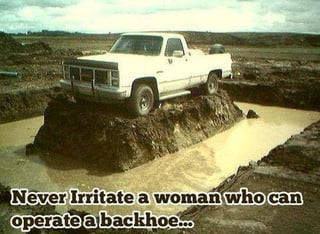 When a bank makes a commercial construction loan, it is certainly not going to take all of the risk. A bank will usually require that the developer cover at least 20% to 30% of the total project cost - land cost, hard costs, soft costs, and a contingency reserve equal to 5% of the hard and soft costs.
When a bank makes a commercial construction loan, it is certainly not going to take all of the risk. A bank will usually require that the developer cover at least 20% to 30% of the total project cost - land cost, hard costs, soft costs, and a contingency reserve equal to 5% of the hard and soft costs.
Usually this takes the form of the developer contributing the land free and clear of any liens, plus having paid much, if not all, of the engineering and architectural fees.

Therefore I was shocked to read a tombstone sent out by my friends at George Smith Partners, one of the oldest commercial mortgage banking companies in the country. You will recall that a tombstone is a closing announcement designed to show the types of commercial loans that a particular lender makes.
The tombstone boasted of the closing of a $4 million non-recourse land loan in Beverly Hills, at 8% interest for one year. This land loan was made at 90% loan-to-cost (LTC)! Ninety percent on a land loan??? I know that Colorado oregano is now legal in California, but 90% LTC on land is an insane amount of leverage. (In this particular case, the cost was the same as the fair market value.)
So I wrote to my buddy, Bryan Schaffer (a very good man), and asked, "Bryan, I don’t understand. What is the exit strategy? Any construction lender is going to expect the developer to contribute the land free and clear, and it might require even more developer’s contribution."

Before I share with you Bryan's answer, I need to explain that, prior to the Great Recession, banks were allowed to give developers credit for the appreciation in the value of their land. For example, suppose a developer purchased some land for $1 million, and three years later, because he bought shrewdly, the land now appraises for $3 million.
Back then, the bank was allowed to value that land at $3 million for equity purposes. Therefore, if the developer only owed $500,000 on this $3 million piece of land, the bank would say that the developer contributed $2.5 million in equity towards the proposed construction loan.
But then the Great Recession hit, and construction lenders took huge losses. To curb what Federal regulators deemed as reckless commercial construction lending, banks were only allowed to value land at the developer's actual cost - in this case, just $1 million. This has greatly restricted commercial construction lending over the past decade.

We are now ready to reveal Bryan's answer to the question, "A land loan of 90% loan-to-value? What the heck have you been smoking?" Haha!
"George, It is very hard to get the full appreciated value of the land. On this deal, if you just did a construction loan, most lenders would only give the developer his basis (actual cost), which was $1.4 million."
"With a $4MM land loan and an appraisal at $4.4 million, the bank will give us at least a $4 million value for land - and most likely the full $4.4 million value. At some banks, if he deposits the $4 million (from the loan proceeds), they will loan him the entire $4 million against it at a very low rate, which he will use to pay off his land loan. He will get the full $4 million to $4.4 million credit (for the value of the land) and will also show $4 million of liquid assets, but it will be in a restricted account."
"So the hard money loan cost him $200K to $300K, but in exchange he does not have to bring in fresh cash of $2-3 million and likely also looks better for future loans because he has the $4 million in a restricted account. It is a little bit of a financial game, and it is only good for someone that does not have the cash. Hope that helps, Bryan."

The hippos imported by Pablo Escobar are breeding like crazy in the wilds of Columbia, and their poop is polluting the local water supplies. Algae blooms.
Did you get lost? It helps to understand that banks only want to lend to developers with lots of cash on hand. Our developer will take this $4 million in land loan proceeds and stick it into the account of the bank which will make the new construction loan. It's a restricted account, so the dough can only be used to construct the proposed 12-unit apartment building.
Because the land has a whopping $4 million loan against it, the bank can't just value the land at the developer's cost of $1.4 million. It makes no sense, so the bank is forced to value it at least at $4 million. And since the bank is already breaking the Fed's rule about valuing the land at the developer's actual cost, they will probably cave in and value the land at its $4.4 million appraised value.
So the land loan costs the developer $200,000 to $300,000 in loan fees and interest - but it reduces by $2 million to $3 million the amount of equity the developer has to contribute to the property.

As Bryan explained, its kind of a shell game (1) to make the developer look liquid and rich; and (2) to get around the Fed's rule that bank construction lenders must value the land at the developer's actual cost. I suspect that there are a lot of parties winking at each other. Haha!














 Who makes land loans today? Where is the best place to find a good land loan? Will you or your borrower qualify for a land loan? How large of a land loan can you get? Today we answer these questions, as well as discuss inadequately capitalized developers.
Who makes land loans today? Where is the best place to find a good land loan? Will you or your borrower qualify for a land loan? How large of a land loan can you get? Today we answer these questions, as well as discuss inadequately capitalized developers.




